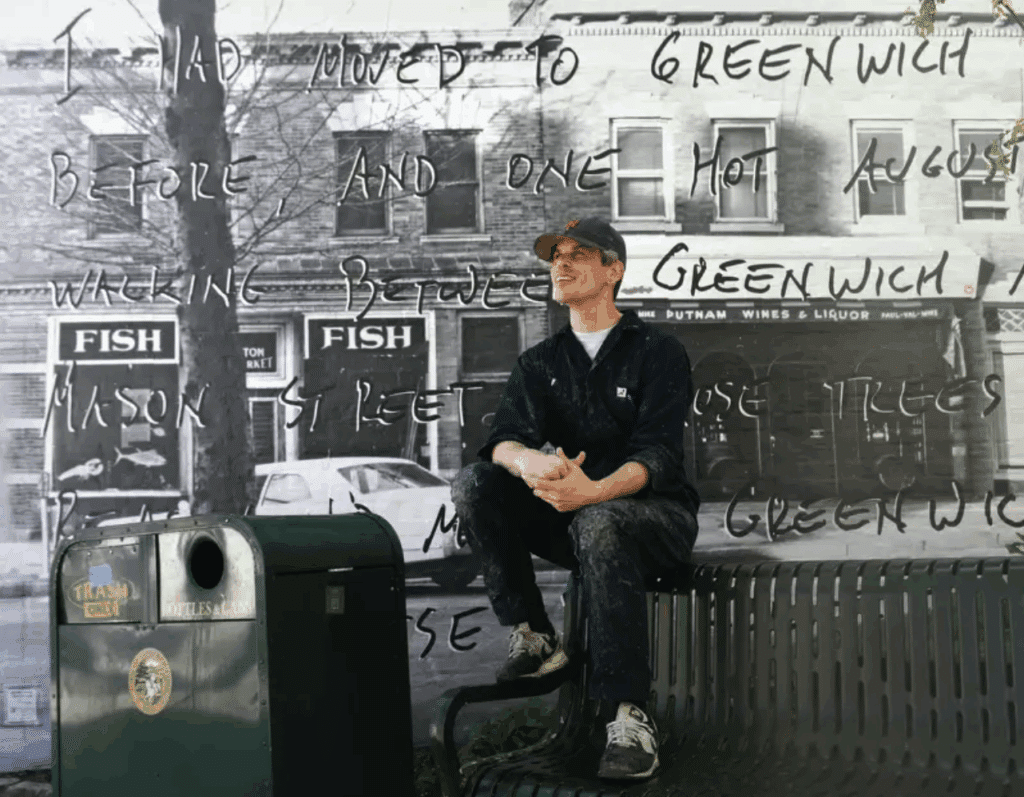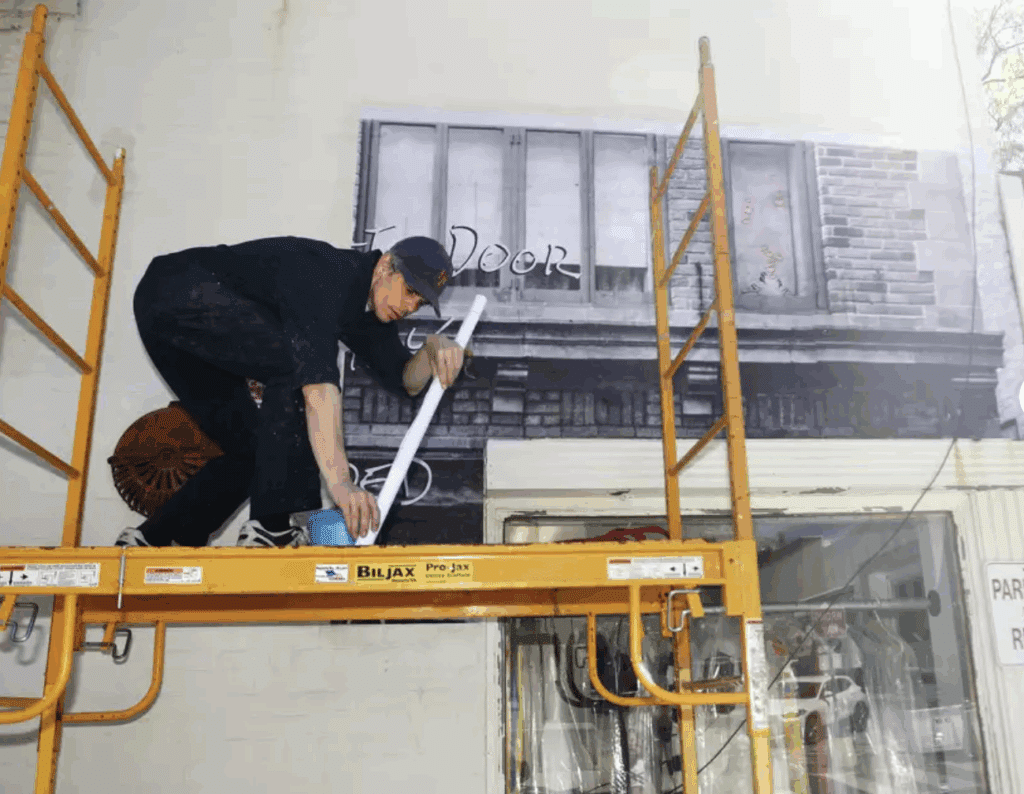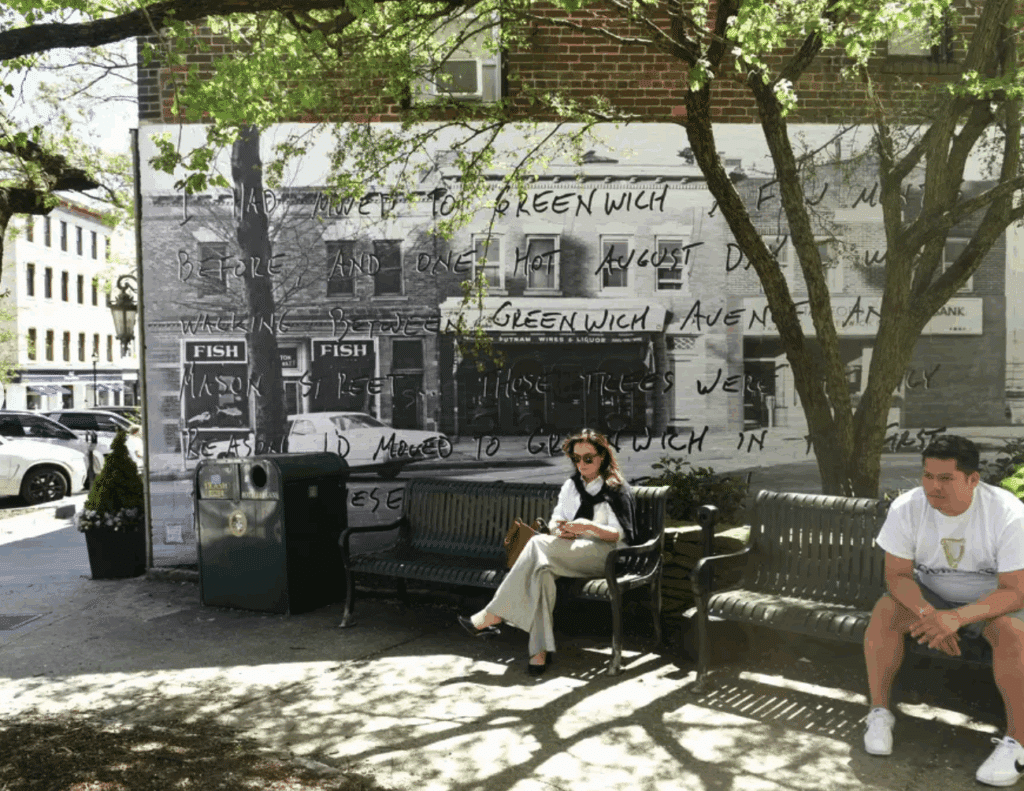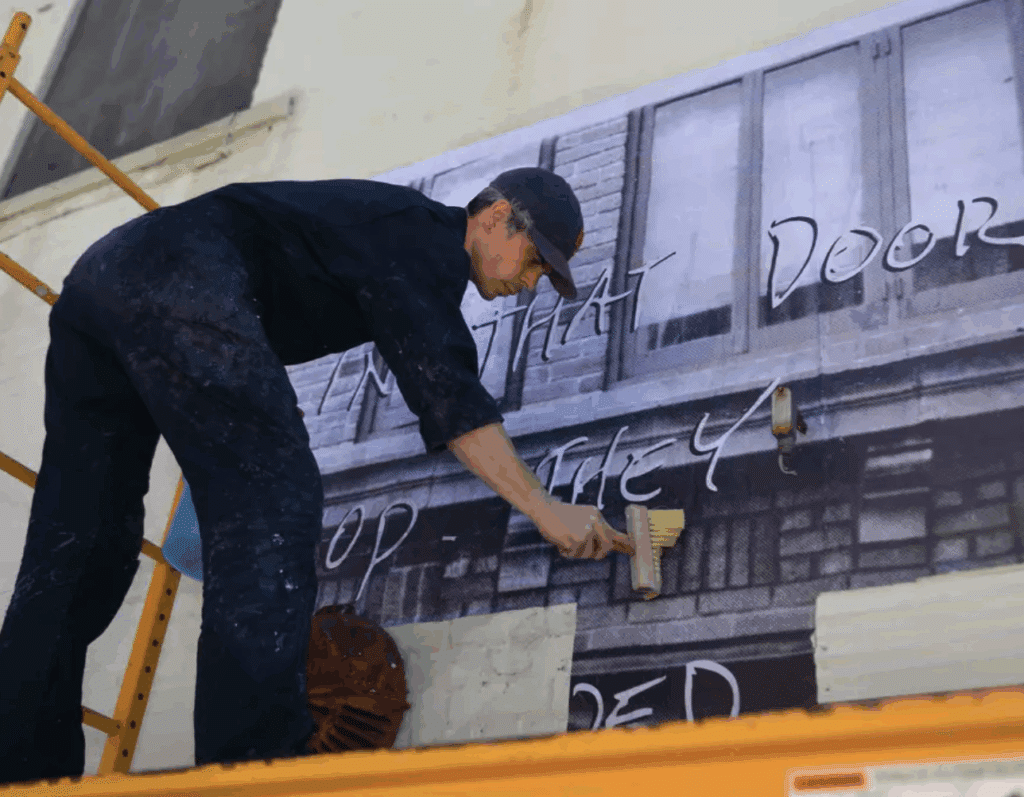Greenwich Time | By Andy Blye | May 3, 2025
GREENWICH — Keen observers on Greenwich Avenue may be transported back in time over the next few months, thanks to four large public art installations now on display.
Historic black and white photos of Greenwich Avenue’s history have been pasted on four buildings downtown by artist Aaron Asis as part of a project with the Greenwich Historical Society.
“It was important for us to have them not be facing Greenwich Avenue,” Asis said on Wednesday, as he finished up the final installation. “They’re kind of peek-a-boos. …We want them to be discoveries for pedestrians.”
Asis has pasted up his murals at Bestever Cleaners, 69 Greenwich Ave., Greenwich Pharmacy, 116 Greenwich Ave.; Starbucks, 301 Greenwich Ave. and Meli-Melo, 362 Greenwich Ave. Two near the top of the Avenue and two near the bottom, as he put it.

Each one has a historic photo overlaid with a quote gathered by the historical society. The one on the wall outside Meli-Melo features well-dressed men on the Avenue decades ago, with a quote about ice delivery, for example. The murals also have QR codes for people to learn more about the work.The murals coincide with Art to the Avenue, a program by the Greenwich Arts Council that celebrates local artists and merchants. Art to the Avenue was on hiatus last year, but the festivities and galleries are back through May 26. Asis created another installation, called “Two-Way Street,” which will be on display at the Greenwich Arts Council offices at 299 Greenwich Ave. as well.
The outdoor murals are just regular copy paper with blown-up sections of the historic photos printed on them. Asis mixes up wheat paste and water, applies the paste to the wall, gently unrolls the paper in place and seals the paper with another layer of paste, applied with a brush. The paper can be blasted off with a pressure washer when its time to take the murals down.
Putting up the paper goes relatively quickly, and the murals can stay up for the better part of a year when applied like this, but the pain comes in the preparation. Asis has to decide how to chop up the images to fit on 36-inch wide rolls of paper, trim off the bent and crinkled edges once they arrive in the mail and carefully measure the pieces so they line up once he’s up on the scaffolding pasting them in place.

“The application process of this is faster than painting a mural,” Asis said. “And the back end is much slower than painting a mural.”
Asis is part of the team at Untapped New York, a tour and media company that takes people to hidden gems in and around New York City.Untapped and the Greenwich Historical Society will be offering walking tours of Greenwich Avenue in the next few months, with stops at Asis’s murals, among others. Four tours in May have already been sold out, but, as of this writing, tickets were available for June and July, which is when the murals are expected to come down.
The photos were chosen to represent different eras on the Avenue, Asis said. The area was built up as a commercial district by the 1880s, according to the historical society, and trolley tracks once lined the ground. The Avenue changed as cars became more common and the area was full of drugstores, food markets, hardware stores, mostly run by local families through the 1970s and 80s.
Today most of the storefronts on the Avenue are occupied by large corporations. Some smaller operations persist, but hanging on can be difficult. The St. Moritz Bakery, an Avenue feature since the 1960s, just shut down in April.

Asis said he is wary of calling himself an artist without context — the word conjures images of a studio artist making things, he said — but he thinks of his job as trying to inspire thought or contemplation with public art.
“The type of work I do is really about collaborating with other organizations, meeting other people, bringing narratives together and using the art as kind of a visual prompt or visual portal to bring people into those narratives and those collaborations,” he said.
Asis said his favorite part about creating public art installations is seeing how people respond. He said people will derive their own meaning from each piece. Some may recall their own memories of the Avenue, others will have social or cultural reflections and some may just breeze past and think it looks pretty, or ugly.
“You can see whatever you want,” he said. “You can love it or hate it. You can talk to someone about the memory or the future or the image or the tech or the craft, or you don’t care. It could be five minutes or two seconds.”
Visit the Greenwich Arts Council website for information about Art to the Avenue and the Greenwich Historic Society website for information about the murals and tours.

